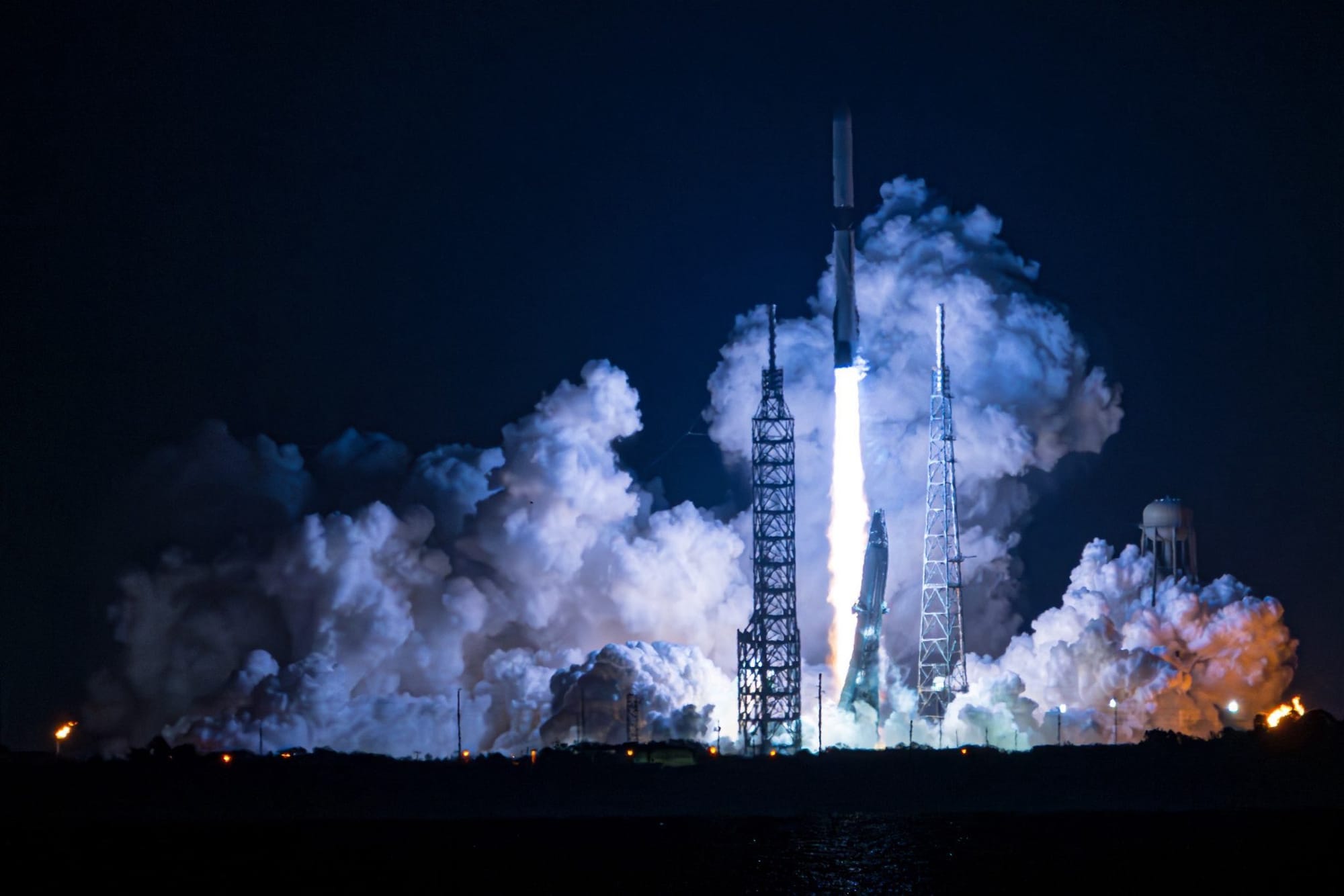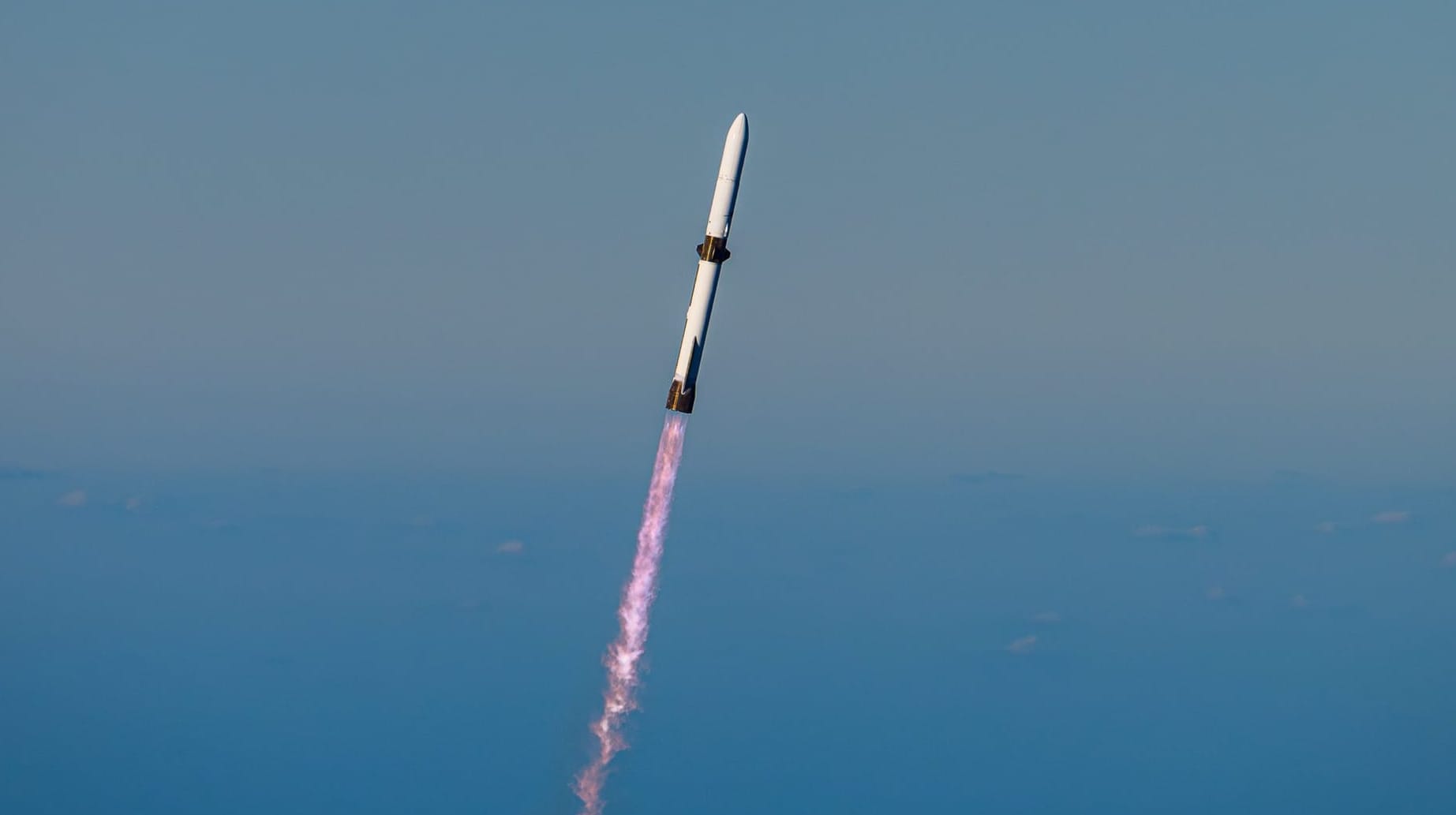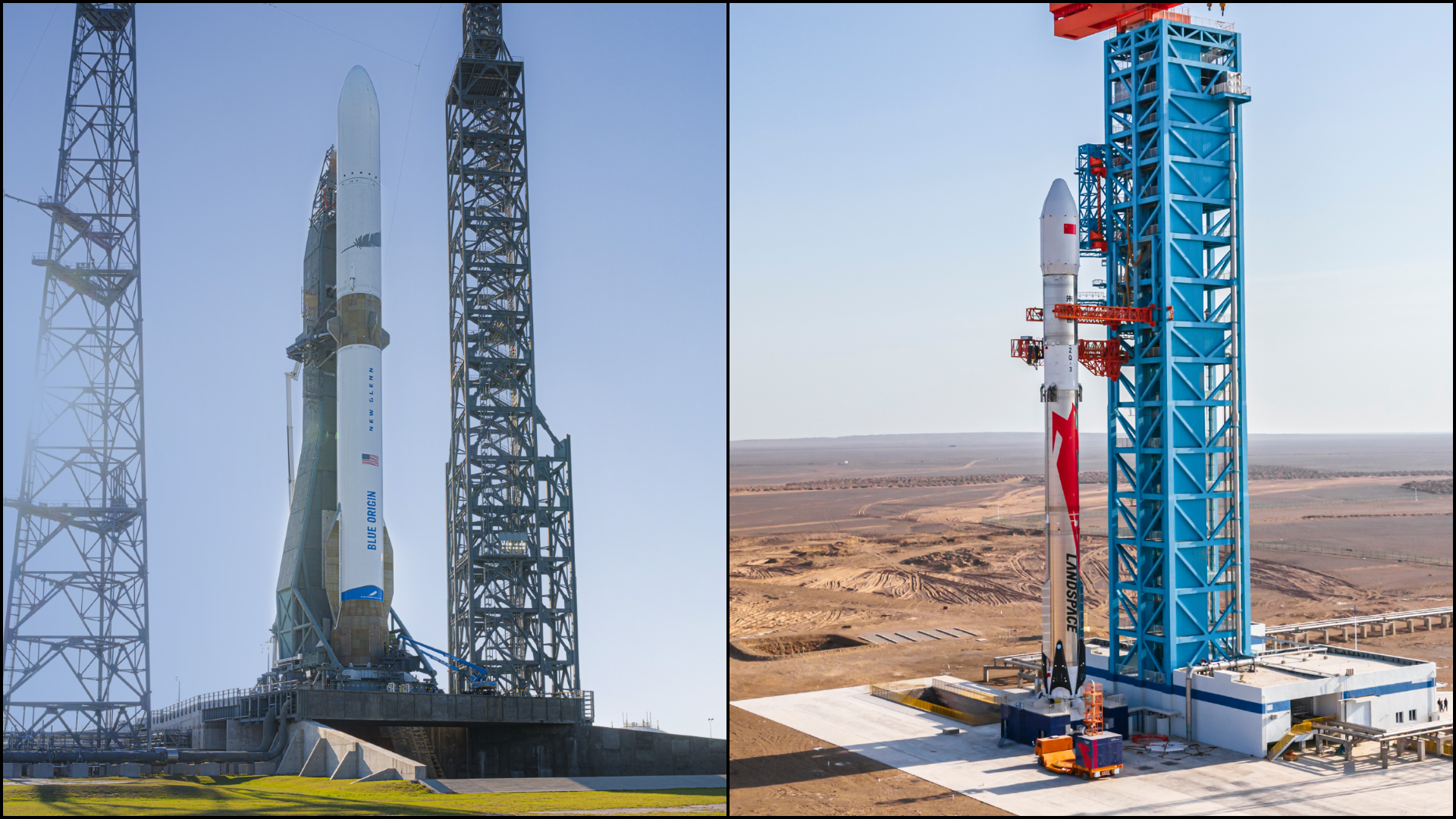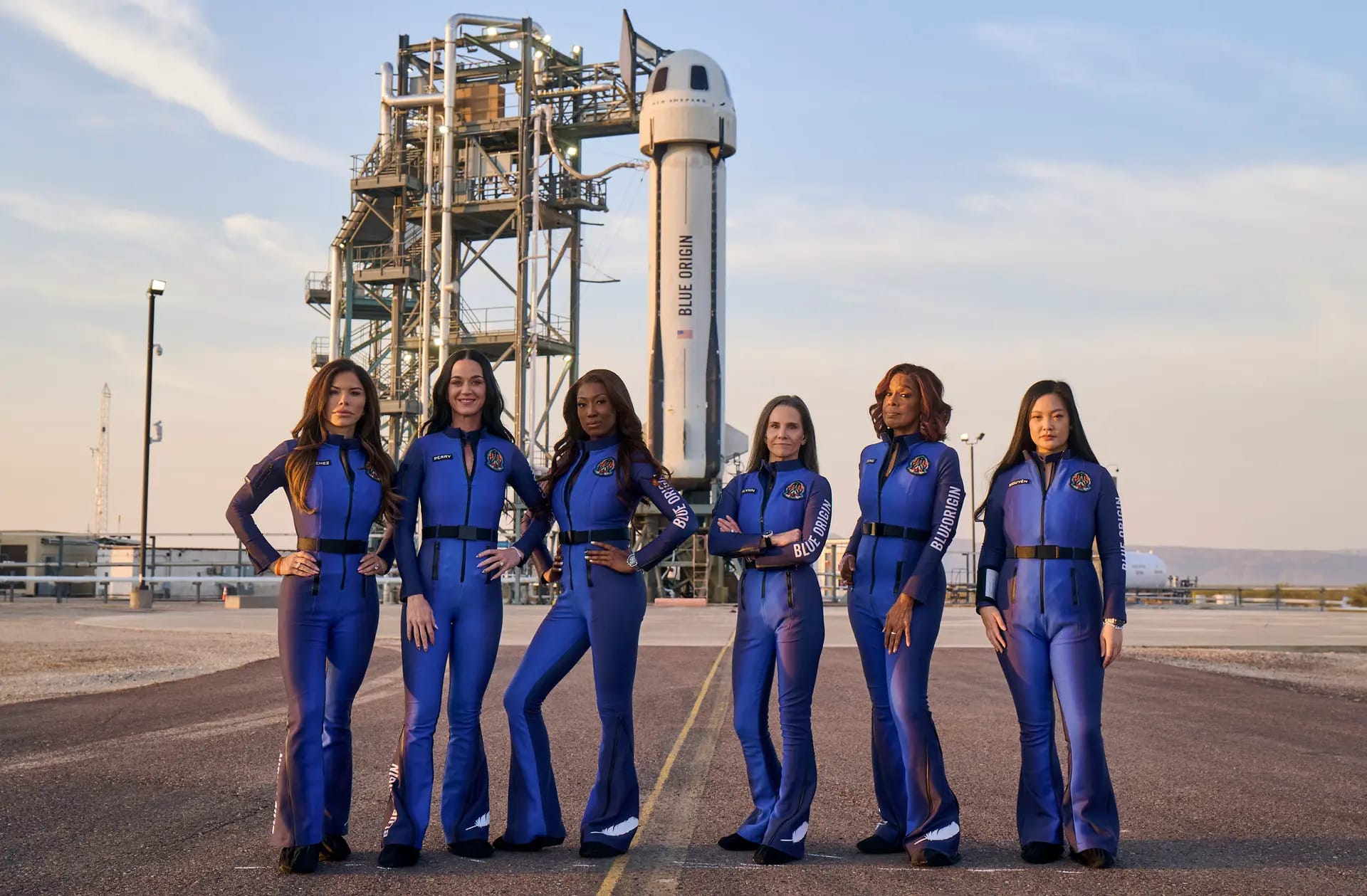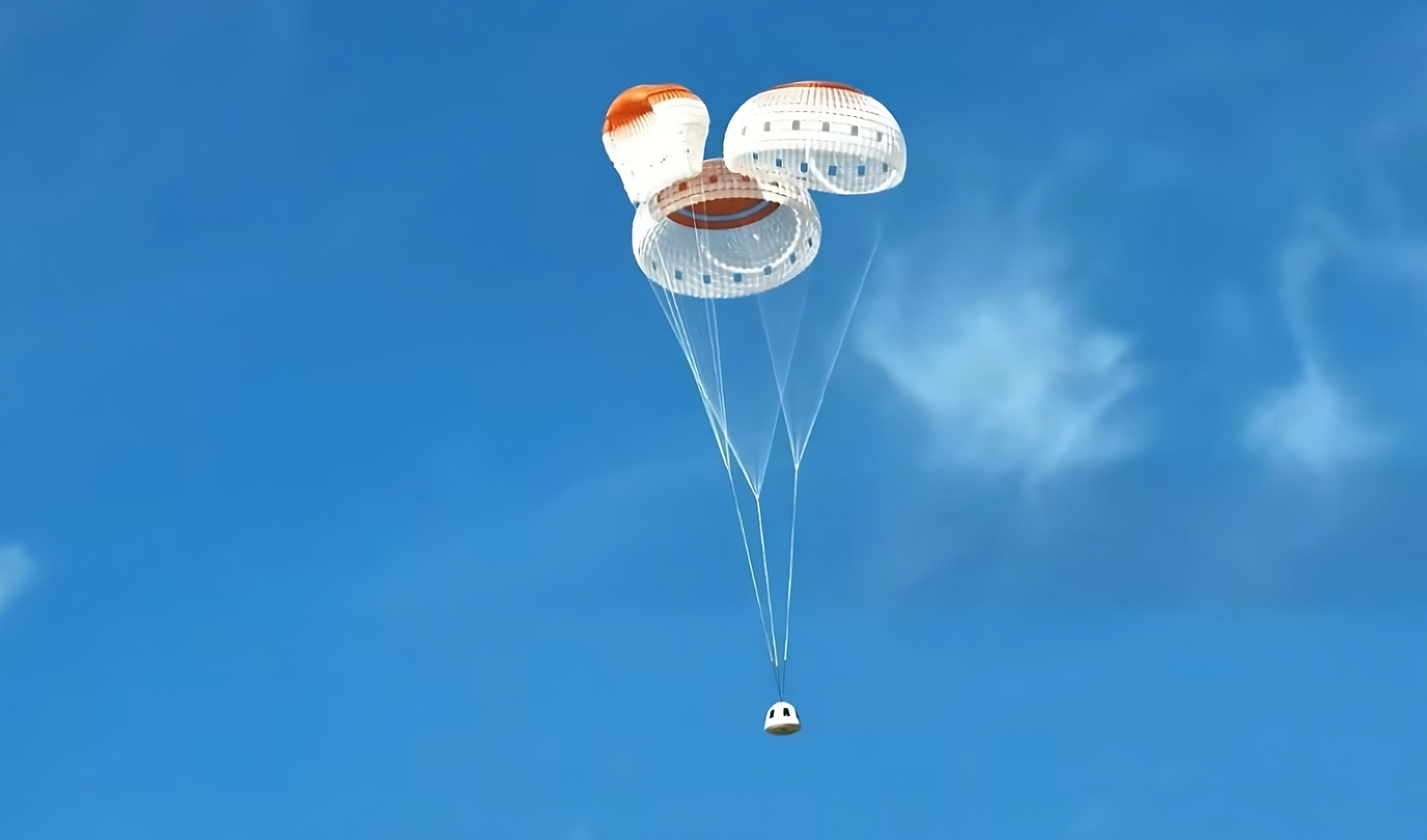Table of Contents
Under the power of seven BE-4 engines, New Glenn soared from Launch Complex 36, heading to space for the first time!
Following liftoff the first and second stages separated a few minutes later, beginning descent of the booster. The booster, named 'So You're Telling Me There's a Chance', relit three BE-4 engines to slow its descent through the atmosphere.
New Glenn lifts off, successfully reaching orbit on its first attempt!
— D Wise (@dwisecinema) January 16, 2025
📸 - @NASASpaceflight pic.twitter.com/FXRkY6vvyK
New Glenn lifting off for the first time in slow motion, via dwisecinema on X.
At almost nine minutes into flight New Glenn's first stage booster was expected to touch down on Blue Origin's drone ship, dubbed 'Jacklyn', downrnage in the Atlantic. Sadly ahead of the landing, the booster was lost but came very close to landing. Despite the loss of the booster, the second-stage continued on into orbit and performed another burn later on. In the hours after the mission, Dave Limp, Chief Executive Officer of Blue Origin, said:
“I’m incredibly proud New Glenn achieved orbit on its first attempt,” – “We knew landing our booster, So You’re Telling Me There’s a Chance, on the first try was an ambitious goal. We’ll learn a lot from today and try again at our next launch this spring. Thank you to all of Team Blue for this incredible milestone.”
Today's mission is the first of many with Blue Origin hoping to fly New Glenn at least twelve times per year, with a potential increase over several years to just shy of fifty. To enable this cadence several boosters will needed, with Jeff Bezos, the company founder, saying:
“We’re going to keep producing GS1s [boosters],” – “[For] rate manufacturing, you have to have a rate. You can’t just say you’re going to produce a certain number and then stop.”
Of course, each booster will also be reused with the company aiming to fly each first-stage twenty-five times, with an interest in increasing that number to one hundred if possible. The desired turnaround time of each booster, from landing downrange to placement back on the launchpad, is a hopeful sixteen days. Speaking on an increased cadence after the first launch, Jarrett Jones, Senior Vice President of New Glenn, stated:
"Today marks a new era for Blue Origin and for commercial space," – "We're focused on ramping our launch cadence and manufacturing rates. My heartfelt thanks to everyone at Blue Origin for the tremendous amount of work in making today's success possible, and to our customers and the space community for their continuous support. We felt that immensely today."
Blue Origin has only one launch pad at Cape Canaveral, Florida, Launch Complex 36. To increase the cadence and redundancy in pad access, a second launch pad is currently being planned.
Hello New Glenn!!!
— D Wise (@dwisecinema) January 16, 2025
What a launch! Congratulations @blueorigin @JeffBezos
📸 - @NASASpaceflight
📺 - https://t.co/pFKGbBv7XT pic.twitter.com/MP4LlBH0Fk
New Glenn's seven BE-4 engines firing during first-stage flight, via dwisecinema on X.
This first flight was not without delays, Blue Origin had been aiming to debut New Glenn in late 2024 carrying NASA's ESCAPADE twin spacecraft mission to Mars. The two spacecraft were removed from the debut mission due to the potential risk of missing the Mars transfer window and having to remove the dangerous hypergolic fuels from onboard.
The next flight of New Glenn is likely not far out, being set for spring, with most of the second vehicle's hardware already in Florida. New Glenn's next flight will incorporate the data gathered from its maiden flight, hopefully allowing for a booster landing.
New Glenn's debut mission comes almost a year after a nearly complete vehicle was seen in February 2024 for various tanking tests. Since appearing, a second-stage static fire was conducted in September followed by a first-stage static fire in December, with a complete flight vehicle on the launch pad.
Future missions for New Glenn include at least a dozen launches for Amazon's Kuiper internet constellation, NASA's ESCAPDADE mission to study Mars' atmosphere, various launches for Telesat's low Earth orbit constellation, crew and cargo Moon landers in support of NASA's Artemis Program, as well as classified missions for the U.S. military.
— Jeff Bezos (@JeffBezos) January 16, 2025
New Glenn lifting off from Launch Complex 36, via Jeff Bezos on X.
What is New Glenn?
New Glenn is Blue Origin's in-development partially reusable heavy-lift launch vehicle. The rocket currently flies solely from Launch Complex 36 in Cape Canaveral, located in Florida.
The payload capacity of New Glenn, when recovering the booster downrange, is currently as follows:
- 45,000 kilograms to low Earth orbit
- 13,600 kilograms to geostationary transfer orbit
- 7,000 kilograms to a trans-lunar trajectory
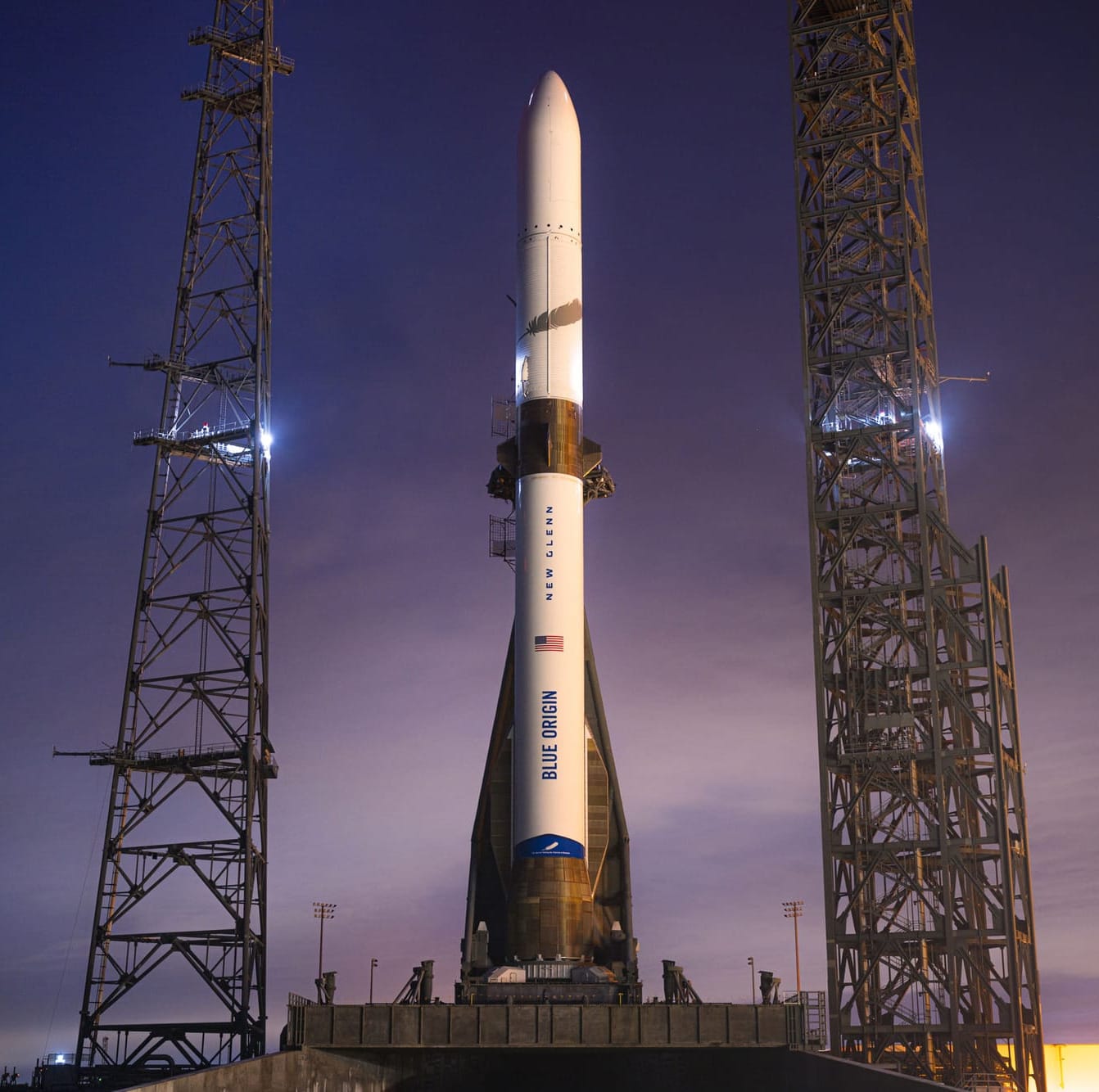
The first-stage is planned to be powered by seven BE-4 engines burning liquid methane and liquid oxygen to generate 1,746 tons of thrust. The second-stage is planned to be powered by two BE-3U engines burning liquid hydrogen and liquid oxygen to generate 145 tons of thrust.
For recovery, New Glenn plans to use four fins located near the top of the booster, to control the boosters' descent when unpowered, and six landing legs that are stowed at the bottom of the booster during flight. It is currently believed that Blue Origin only plans to land the first-stage booster downrange on a drone ship.
On the launch pad, the rocket is 98 meters tall and 7 meters in diameter, Blue Origin has not yet said how much the launch vehicle weighs fully fuelled.
Who is Blue Origin?
Blue Origin is an American aerospace company founded in September of 2000 and headquartered in Kent, Washington, in the United States. The company currently operates the New Shepard sub-orbital reusable launch vehicle and the heavy-lift partially reusable orbital launch vehicle called New Glenn.
Blue Origin was founded, and is still owned, by Jeff Bezos with the following long-term vision:
"Blue Origin was founded with a vision of millions of people living and working in space for the benefit of Earth. Blue Origin envisions a time when people can tap into the limitless resources of space and enable the movement of damaging industries into space to preserve Earth, humanity’s blue origin."

